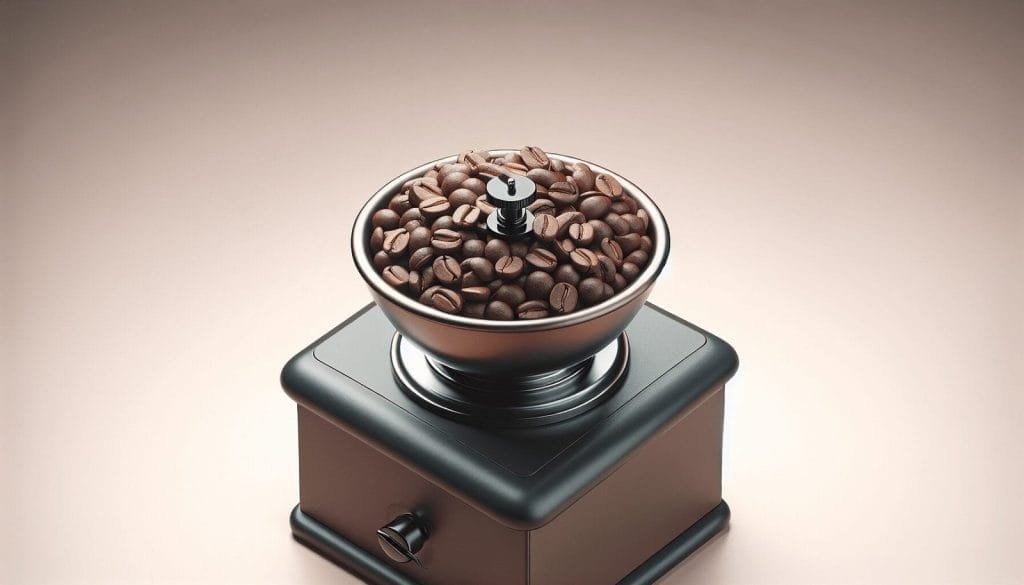Imagine a world where the aroma of freshly brewed coffee invigorates your senses every morning, filling your soul with warmth and anticipation. Now, picture yourself sipping on a delicious cup of joe, savoring each rich and full-flavored sip. But wait – have you ever wondered about the perfect timing for your coffee beans to reach their peak freshness? Enter the mysterious yet intriguing concept known as the Coffee 1 Week Rule. In this article, we will demystify this rule and shed light on the secrets behind the optimal time to enjoy your beloved caffeine fix. So grab your favorite mug, sit back, and let’s embark on this delightful journey together.
Understanding The Coffee 1 Week Rule
Definition of the Coffee 1 Week Rule
The Coffee 1 Week Rule is a widely accepted guideline in the coffee community, suggesting that the optimal period for consuming coffee after it has been roasted is within one week. Beyond this time frame, the quality and freshness of the coffee gradually deteriorate, leading to a noticeable decline in flavor and taste. This rule serves as a general recommendation for coffee drinkers to ensure they experience the full potential of their coffee beans.
History and Origin of the Rule
The Coffee 1 Week Rule has its roots in the pursuit of the perfect cup of coffee. It emerged from the passion and curiosity of coffee enthusiasts who sought to unravel the complexities behind the art of brewing. Over time, through extensive experimentation and observation, it was discovered that coffee beans undergo significant changes after the roasting process. These changes influenced the flavor and aroma profile of the resulting brew, leading to the establishment of the 1-week rule as a benchmark for coffee freshness.
The Science Behind The Coffee 1 Week Rule
Coffee Degradation
To understand the Coffee 1 Week Rule, it is crucial to comprehend the process of coffee degradation. After roasting, coffee beans release carbon dioxide as a byproduct of the chemical reactions within. This degassing process continues for several days, during which the flavors and aromas are at their peak. However, once the degassing process subsides, the coffee begins to lose its freshness and vibrant characteristics. Staling, oxidation, and moisture absorption are some of the culprits responsible for the deterioration of the coffee’s quality.
The Role of Oxygen in Coffee Flavor
Oxygen plays a significant role in the flavor development of coffee and is closely tied to the Coffee 1 Week Rule. When coffee is exposed to oxygen, it undergoes oxidation, leading to the degradation of volatile compounds responsible for desirable flavors. The initial one-week period is critical as it is the time when the coffee beans achieve their maximum flavor potential. After this point, oxygen starts to react with these compounds, resulting in the loss of aromatic compounds and development of stale flavors.

Why The Coffee 1 Week Rule Matters
Impact on Taste and Flavor
The Coffee 1 Week Rule directly affects the taste and flavor profile of the brewed coffee. Within the first week after roasting, the flavors are vibrant, complex, and distinct. The coffee exhibits a pleasant acidity, balanced sweetness, and a delightful aroma. However, as the coffee ages past the one-week mark, these flavors gradually diminish, giving way to a more muted and stale taste. By adhering to this rule, coffee drinkers can fully experience the exquisite flavors and nuances present in freshly roasted coffee.
Freshness Factor
Freshness is a crucial element in the coffee-drinking experience. The Coffee 1 Week Rule emphasizes the importance of consuming coffee while it is still at its freshest state. Coffee beans go through a process called off-gassing after roasting, during which the beans release carbon dioxide. This off-gassing period contributes to the heightened flavors and aromas. By consuming coffee within a week of its roast date, you ensure that the coffee is at its peak freshness, allowing you to savor the true essence of the beans.
Acidity Levels
Acidity is a vital characteristic in coffee, contributing to its overall flavor profile. Within the one-week timeframe, coffee beans retain a desirable level of acidity, providing a bright and lively taste. As time progresses, the acidity diminishes, resulting in a flat and dull coffee. The Coffee 1 Week Rule allows coffee enthusiasts to enjoy the optimal acidity levels in their cup, enhancing the overall sensory experience.
How to Implement The Coffee 1 Week Rule
Guidelines for Proper Coffee Storage
Proper storage is crucial in maintaining the freshness of coffee beans beyond the one-week mark. To implement the Coffee 1 Week Rule effectively, it is essential to store coffee in an airtight container, away from direct sunlight, heat, and moisture. Additionally, storing coffee beans at room temperature or in the freezer can help slow down the staling process. Following these storage guidelines helps preserve the flavors and aromas, ensuring a satisfying cup of coffee even after the initial week.
Optimized Brewing Techniques
To make the most of the Coffee 1 Week Rule, it is important to adopt optimized brewing techniques. Adjusting grind size, water temperature, and brew time can help compensate for any loss of flavor that occurs as the coffee ages. Furthermore, experimenting with different brewing methods, such as French press or pour-over, can extract the best flavors from your coffee beans, even if they have surpassed the one-week mark.

Exceptions to The Coffee 1 Week Rule
Quality of Beans
While the Coffee 1 Week Rule provides a general guideline, it is essential to consider the quality of the coffee beans in question. High-quality, specialty-grade beans often retain their freshness and flavors for a more extended period compared to lower-grade beans. Therefore, if you have access to meticulously sourced and freshly roasted beans, they may still exhibit exceptional qualities even beyond the one-week timeframe.
Coffee Roasting Techniques
The coffee roasting process also plays a significant role in the longevity of flavors. Lighter roasts tend to retain their vibrancy and flavors for a shorter period, making adherence to the Coffee 1 Week Rule even more critical. On the other hand, darker roasts may exhibit longer flavor longevity, allowing for a slightly more relaxed approach to the rule. Roasting techniques and profiles can influence the rate of flavor degradation, creating exceptions to the general one-week timeframe.
Consumer Taste Preference
Ultimately, taste preference is subjective and can vary among coffee drinkers. Some individuals may enjoy the mellow and milder flavors found in coffee that has surpassed the one-week mark. Others may be more sensitive to flavor changes and prefer their coffee to be consumed within the optimum freshness period. It is important to consider personal taste preferences when deciding whether to strictly adhere to the Coffee 1 Week Rule or extend the lifespan of the beans based on individual taste preferences.
Gauging Coffee Freshness beyond The 1 Week Rule
Aroma Check Method
One way to gauge coffee freshness beyond the one-week mark is by conducting an aroma check. The aroma of freshly ground coffee can provide valuable insights into the flavor profile. If the coffee still emits a strong and pleasant aroma, it is an indication that the flavors have yet to deteriorate significantly. However, if the aroma is weak or stale, it suggests that the coffee may no longer possess the desired freshness.
Visually Inspecting Coffee Beans
Apart from relying on the senses of smell and taste, visually inspecting the coffee beans can provide additional clues regarding freshness. Coffee beans that have lost their luster and appear dull or dry may have surpassed their prime. Conversely, beans that maintain their shine and vibrant appearance may still retain desirable flavors beyond the one-week mark.
Understanding the Coffee Bloom Process
The coffee bloom is a significant indicator of freshness and quality in freshly roasted coffee. When coffee grounds come into contact with hot water, they release carbon dioxide gas. This gas creates a blooming effect, characterized by the formation of bubbles on the surface of the coffee bed. A vigorous and long-lasting bloom is typically a sign of fresh coffee. As the coffee ages, the bloom weakens, providing a visual representation of the coffee’s deterioration in quality.

Impact of The Coffee 1 Week Rule on Different Types of Coffee
Impacts on Espresso
Espresso, known for its intense and concentrated flavors, is no exception to the Coffee 1 Week Rule. The freshness of the coffee beans is crucial in achieving a well-balanced and flavorful shot of espresso. Adhering to the rule ensures that the intensity, acidity, and sweetness of the espresso shot are at their peak. As espresso brewing relies on extracting flavors within a short time, the quality of the coffee becomes even more pronounced.
Impacts on Cold Brew
Cold brew coffee, with its smooth and less acidic taste profile, is often brewed using a longer steeping process. The Coffee 1 Week Rule remains relevant in the case of cold brew, although the extended steeping time may allow for a slight extension of the optimal freshness window. However, for a truly exceptional cold brew experience, consuming the coffee within a week of roasting still delivers the best results.
Impacts on Drip Coffee
Drip coffee, a popular brewing method in many households, is also impacted by the Coffee 1 Week Rule. As drip coffee relies on a more prolonged contact time with water, the flavors can become more muted over time. While the brewing process itself may mitigate some of the flavor loss, adhering to the rule ensures that the drip coffee maintains its intended flavor profile and quality.
Role of Packaging in The Coffee 1 Week Rule
Importance of Vacuum Sealing
Packaging plays a crucial role in preserving the freshness of coffee beans. Vacuum sealing, in particular, helps remove excess oxygen from the package, creating a protective barrier against oxidation and flavor degradation. By purchasing coffee beans that come in vacuum-sealed bags, you can extend the lifespan of the beans and potentially surpass the one-week window while still maintaining satisfactory flavor quality.
Effect of Light on Coffee Beans
Exposure to light can have detrimental effects on the freshness and flavor of coffee beans. UV rays, present in natural and artificial light sources, contribute to the breakdown of organic compounds responsible for desirable flavors. It is crucial to store coffee beans in opaque or light-blocking packaging to minimize exposure and preserve the quality of the coffee.
Importance of Temperature Control
Temperature control plays an important role in maintaining the freshness and flavor of coffee beans. Extreme temperature fluctuations can accelerate the staling process and degrade the quality of the coffee. Storing coffee beans in a cool and consistent environment, away from heat sources, ensures that the beans retain their optimal flavors and aromas for a more extended period.

Critiques and Controversies Surrounding The Coffee 1 Week Rule
Debates in the Coffee Community
Like any widely accepted rule, the Coffee 1 Week Rule is not without its fair share of debates and controversies within the coffee community. Some argue that the one-week timeframe is too restrictive and fails to account for variations in coffee quality and personal taste preferences. Others believe that coffee can still be enjoyable well beyond the one-week mark and that flavor degradation is not as pronounced as claimed. These discussions prompt further exploration and refinement of the rule to accommodate a wider range of perspectives.
Scientific Analysis and Findings
Scientific research has delved into the complexities of coffee flavor and the impact of time on its sensory characteristics. Studies have revealed that while flavor degradation does occur, the rate and extent of this degradation can vary depending on factors such as storage conditions, bean quality, and roast profile. These findings provide valuable insights that further contribute to the ongoing discussion surrounding the Coffee 1 Week Rule.
Conclusions: Weighing the Merits of The Coffee 1 Week Rule
Summarizing the Arguments
The Coffee 1 Week Rule serves as a comprehensive guideline for maximizing flavor and freshness in coffee consumption. It takes into account the chemical changes that occur in coffee beans after roasting and the subsequent impact on taste and aroma. While the rule provides an excellent starting point for preserving coffee quality, it is important to consider exceptions based on bean quality, roast profile, and personal taste preferences.
Expert Opinions and Advice
Experts in the coffee industry generally agree that consuming coffee within the one-week timeframe ensures the best flavor experience. However, they also emphasize the importance of quality beans and proper storage techniques to extend the life of coffee beyond this timeframe. It is advisable to consult with reputable coffee professionals and experiment with different approaches to find the optimal balance between freshness and flavor longevity.
Individual Application of the Rule
Ultimately, the application of the Coffee 1 Week Rule depends on individual preferences and priorities. Some coffee drinkers may prioritize freshness and adhere strictly to the rule to experience the full potential of their beans. Others may find enjoyment in exploring the evolving flavors of coffee as it ages, finding their personal sweet spot beyond the one-week mark. Regardless of one’s approach, the Coffee 1 Week Rule serves as a valuable foundation for understanding the nuances of coffee freshness and guiding the pursuit of the perfect cup.




